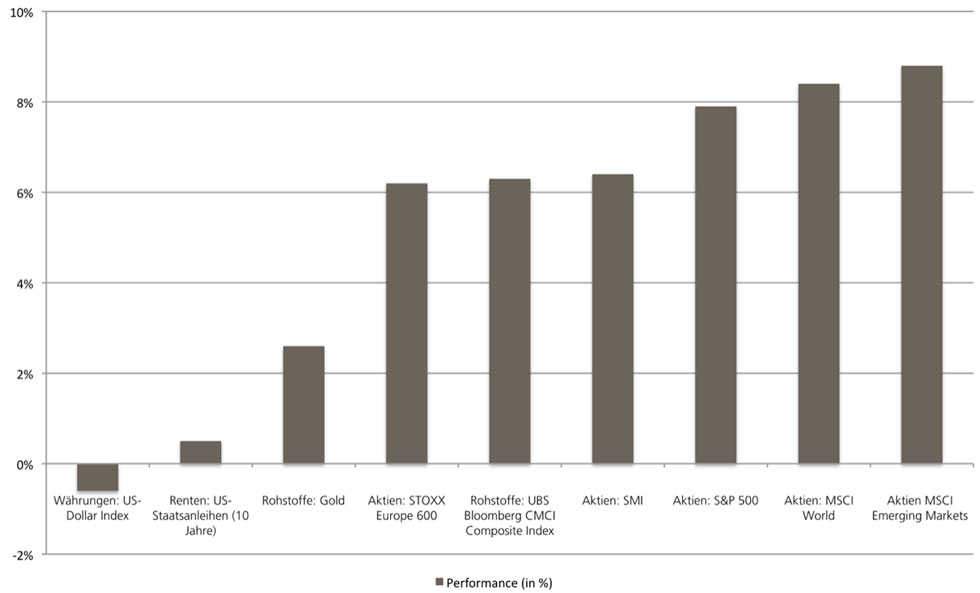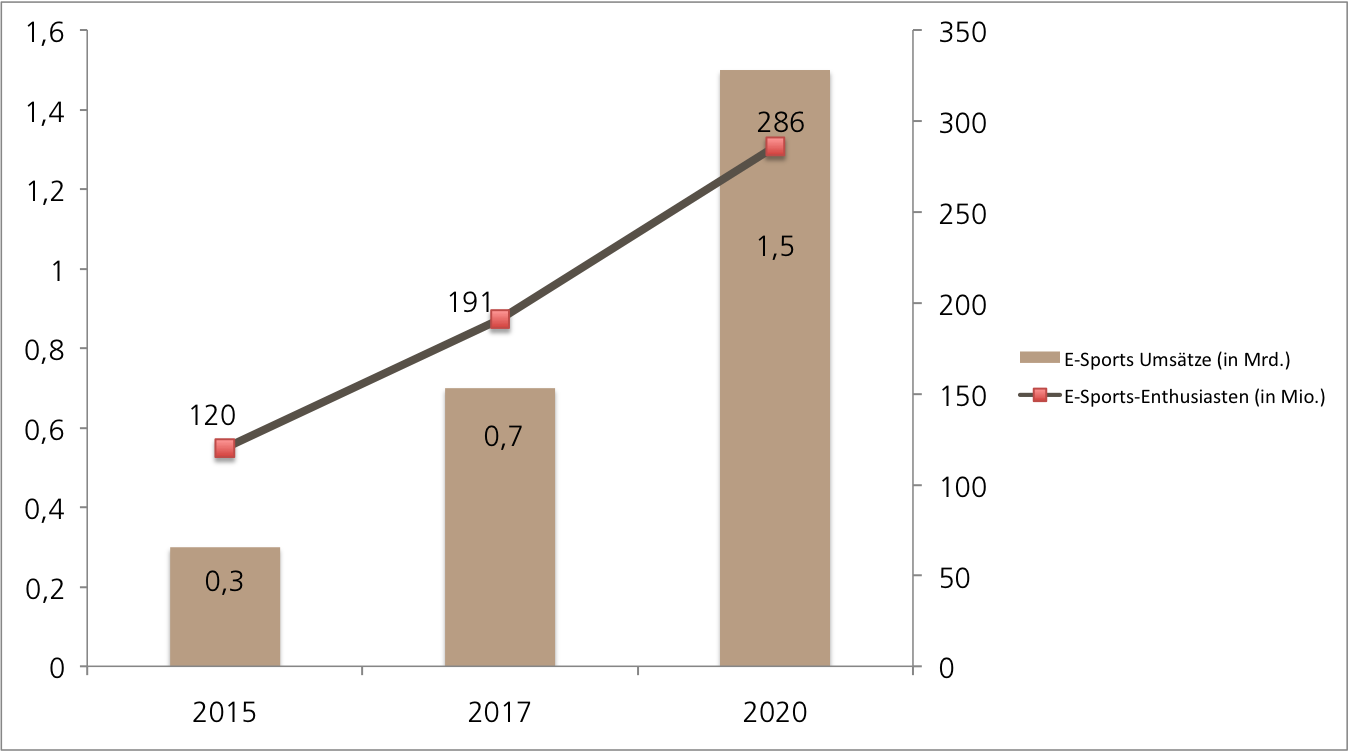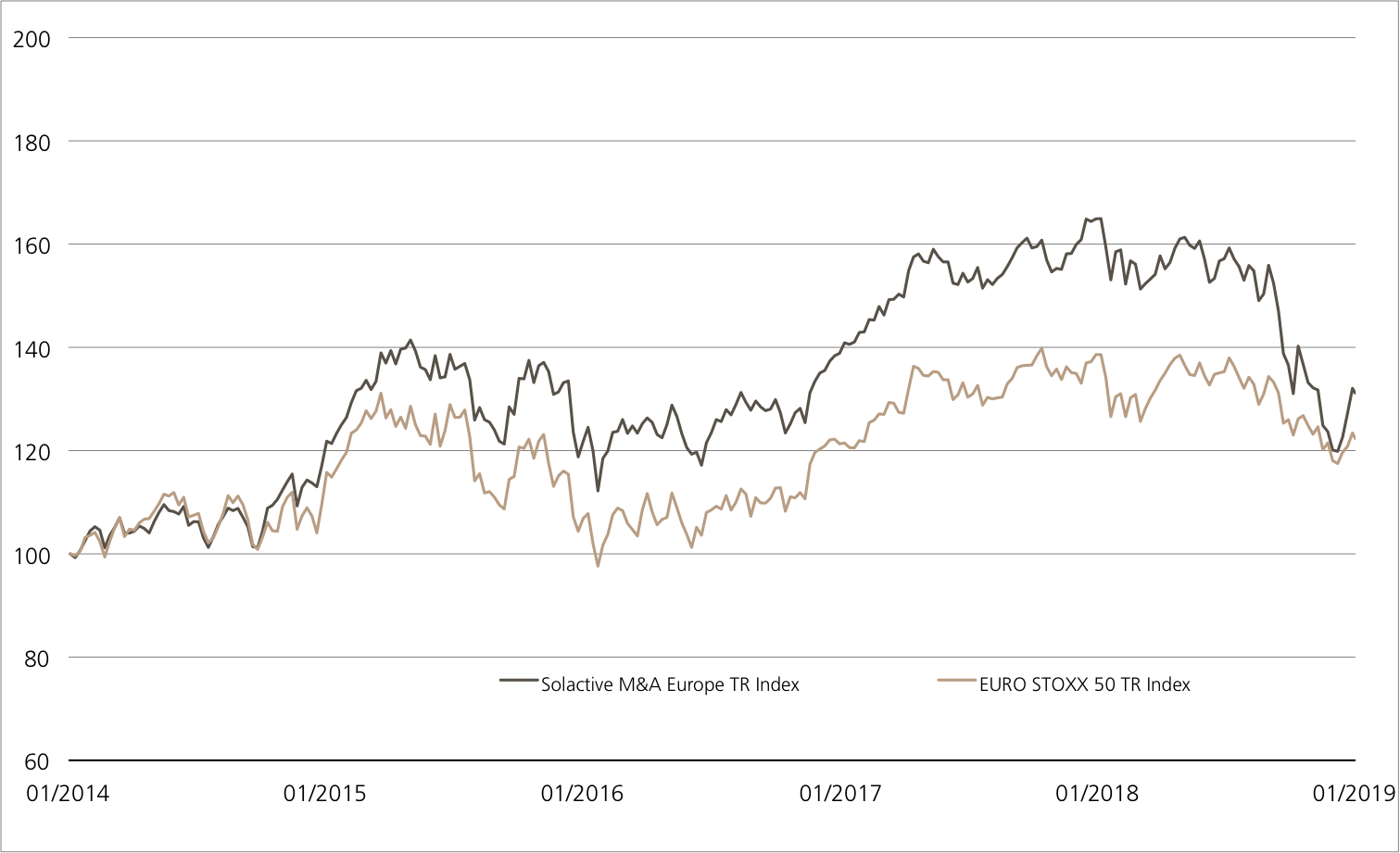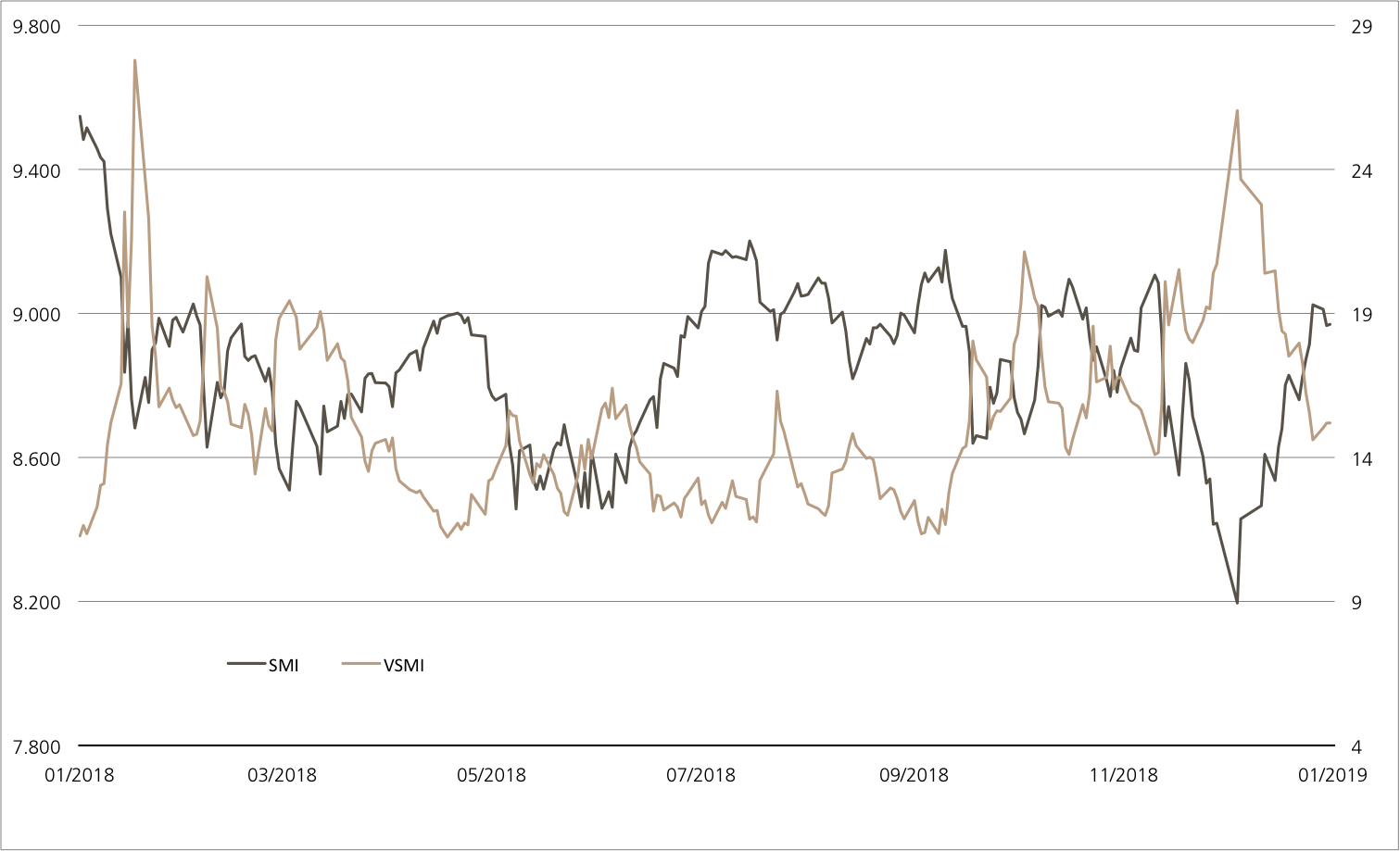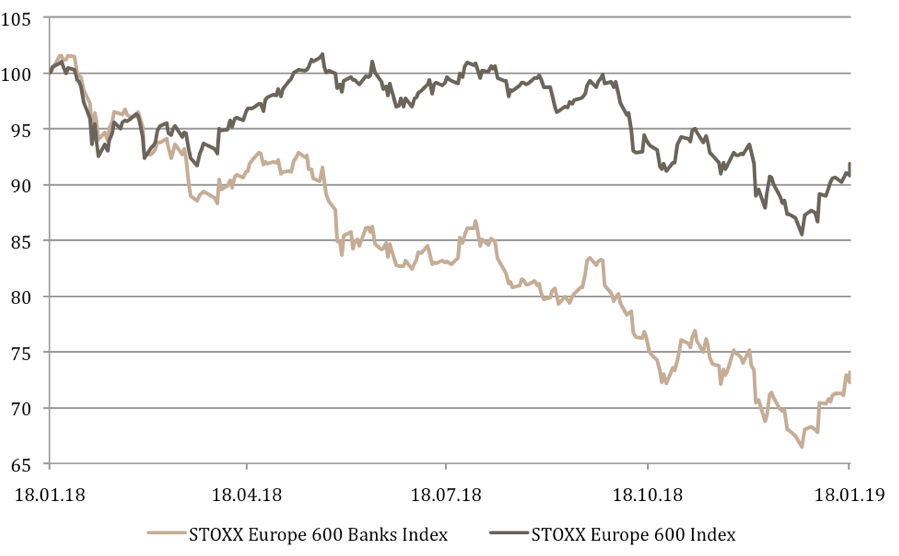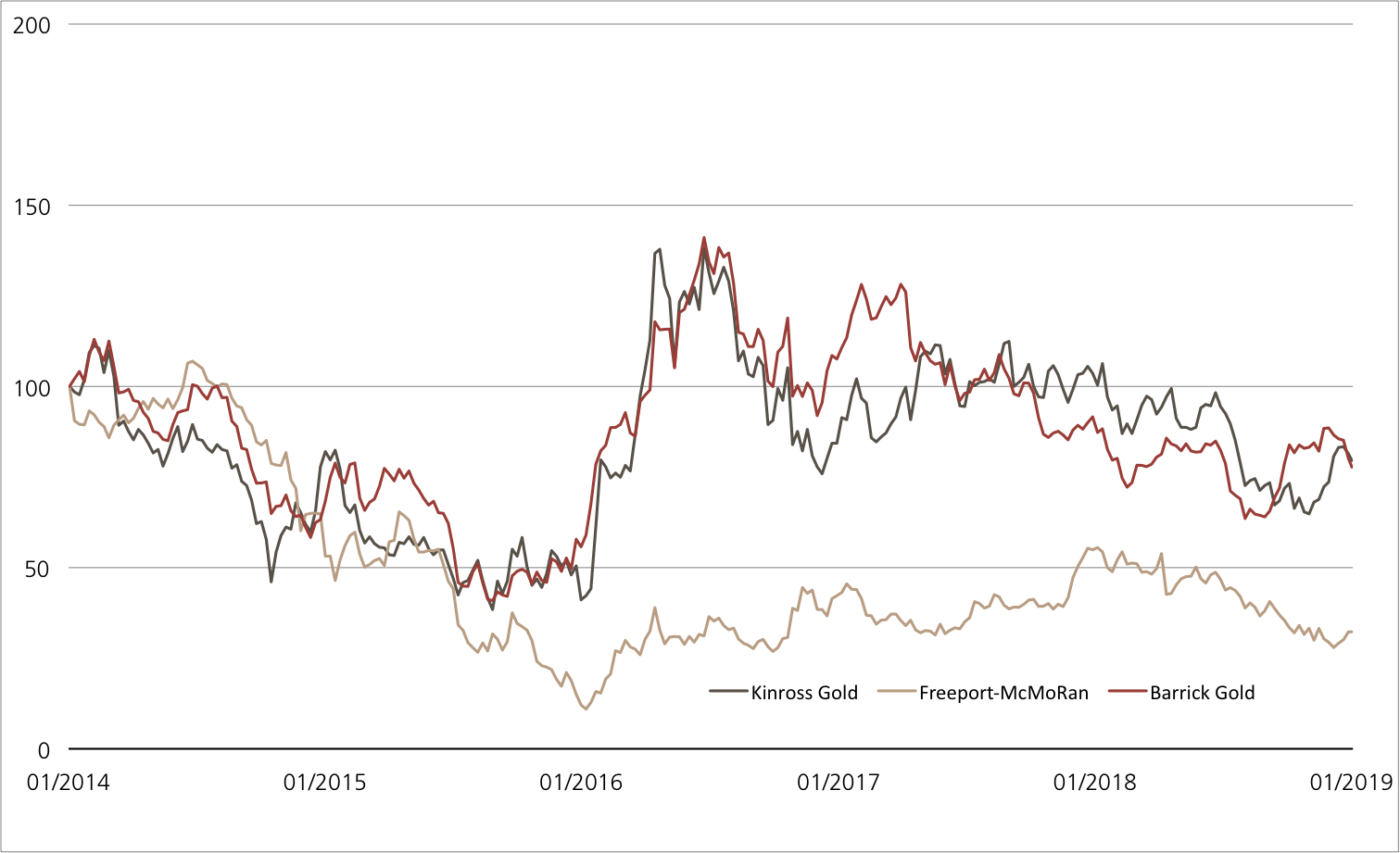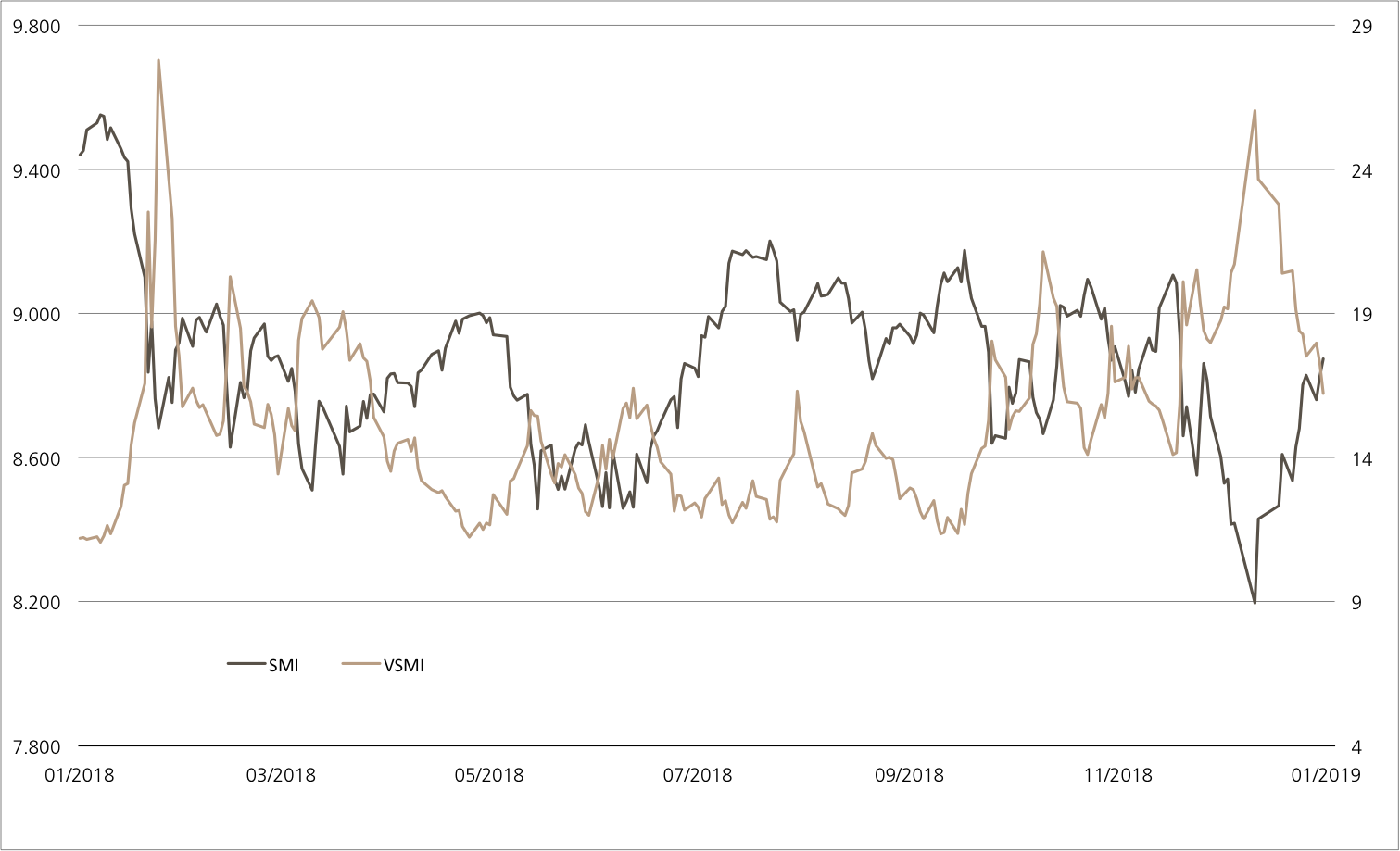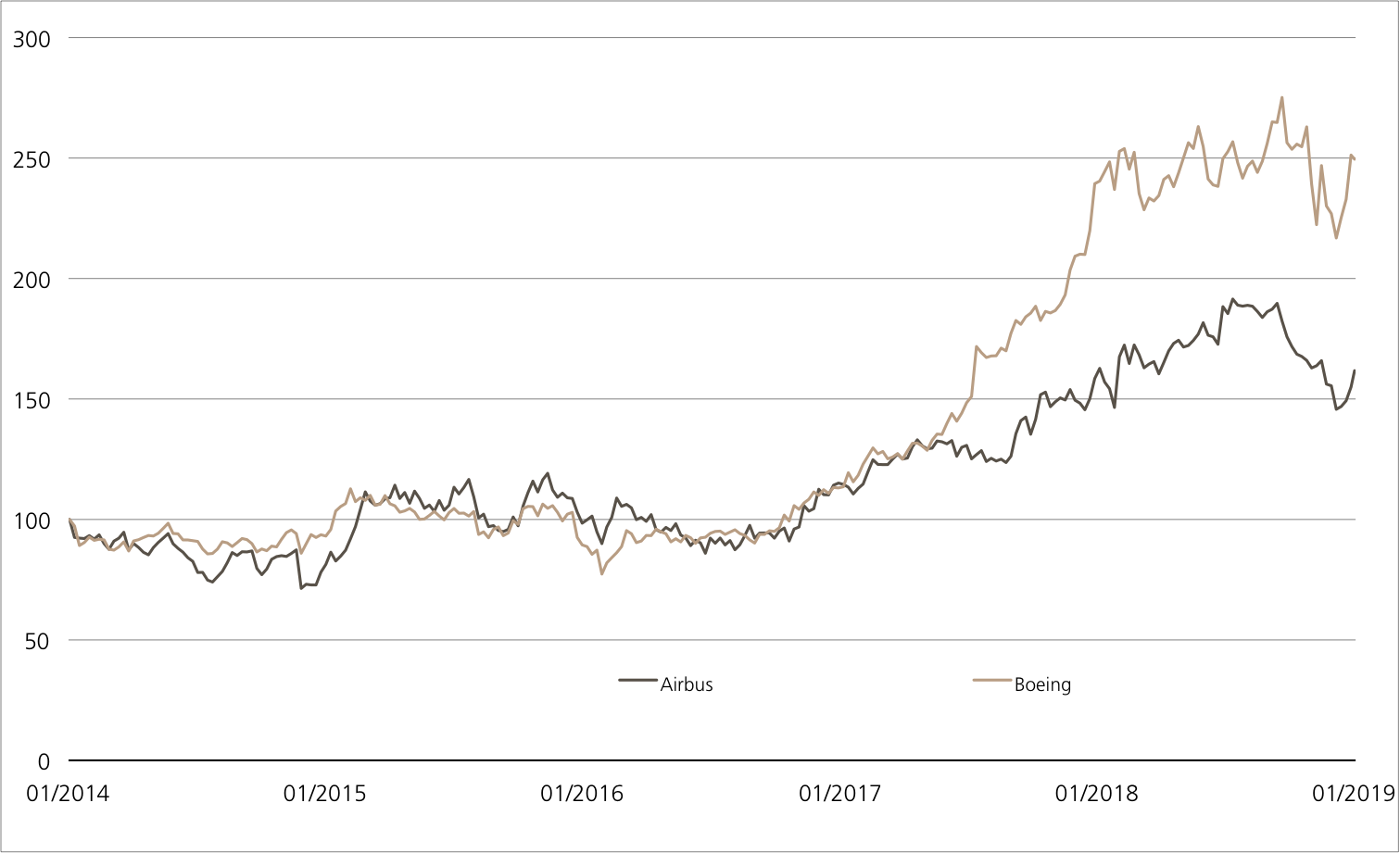Weekly Hits: Stratégie de dividendes & Tesla
Vendredi, 08.02.2019

- Thème 1: Stratégie de dividendes - La récolte peut commencer
- Thème 2: Tesla - Les chaînes de production génèrent des bénéfices
Stratégie de dividendes
La récolte peut commencer
Alors que le revirement des taux s’enlise aux États-Unis, on ne voit toujours aucun signe annonçant la fin de la politique ultra-accommodante ici, en Suisse. Par conséquent, les rendements réalisables sur le marché des obligations en CHF sont bas. A contrario, les rendements en dividendes de plus de 3% générés sur le marché des actions suisse sont assez impressionnants. UBS CIO WM estime cet écart intéressant à moyen terme pour les investisseurs, notamment pour ceux qui se concentrent sur des entreprises qui affichent des distributions de grande qualité. C’est là qu’intervient le Dow Jones Switzerland Select Dividend 15 Index™. Cet indice sonde systématiquement le marché suisse à la recherche de titres distribuant des dividendes attrayants. L’UBS Global Quality Dividend Payers Total Return Index, de son côté, adopte une approche mondiale. Les Open End PERLES offrent un accès simple et rentable aux deux stratégies. Le produit (symbole : SWDIV) qui se concentre sur des titres domestiques est proposé en CHF, tandis que l’UBS Global Quality Dividend Payers Index est disponible en CHF (symbole : DIVQC), en EUR (symbole : DIVQE) ainsi qu’en USD (symbole : DIVQD).
Selon UBS CIO GWM, les entreprises suisses affichent actuellement un niveau d’endettement historiquement bas ainsi qu’une solide rentabilité. Bien qu’on observe une hausse des fusions et acquisitions, tant en Suisse que dans le reste du monde, les experts partent du principe que les coefficients de distribution resteront élevés. Dans la quête de titres à dividendes attrayants, CIO GWM estime que la durabilité ainsi que les rendements des distributions comptent parmi les critères objectifs et courants. La croissance des dividendes, en revanche, serait parfois négligée. Toutefois, les analystes sont d’avis que les entreprises qui affichent des rendements élevés mais qui sont à la traîne en termes de croissance des bénéfices et des dividendes risquent de sous-performer, notamment dans le contexte actuel. (Source : UBS CIO GWM, «Swiss high-quality dividends», Equities, 21.01.2019)
Pour le Dow Jones Switzerland Select Dividend 15 Index™, la croissance des dividendes compte parmi les critères de sélection déterminants. Cette stratégie observe à la loupe la participation aux bénéfices sur une période de trois ans. En plus d’autres paramètres tels que la liquidité des transactions, les rendements des dividendes ainsi que les rendements des capitaux propres jouent aussi un rôle important. L’UBS Global Quality Dividend Payers Index poursuit une approche tout à fait comparable, à une différence près: UBS Research est responsable de la composition de l’indice. Tous les trimestres, les analystes filtrent 30 titres de substance au sein d’un univers international de plus de 3300 actions. À cet égard, ils prennent en compte le taux d’intérêt appliqué aux distributions et les rendements des capitaux propres dans l’évaluation. Les experts se concentrent également sur des sociétés qui enregistrent une croissance durable de leur chiffre d’affaires et de leurs bénéfices. Ils veillent par ailleurs à assurer une diversification saine concernant l’allocation des secteurs et des pays.Opportunités: la prochaine saison des dividendes débutera dans les semaines à venir et devrait alors capter toute l’attention. Avec les Open End PERLES (symbole : SWDIV), les investisseurs peuvent se positionner tôt sur une sélection de titres de substance suisses via le Dow Jones Switzerland Select Dividend 15 Index™. Ceux qui préfèrent une approche internationale peuvent opter pour l’UBS Global Quality Dividend Payers Index qui leur permettra de choisir entre trois monnaies de transaction (voir à droite). En toute logique, ces deux indices sont des indices Total Return. Cela signifie que les éventuels versements de dividendes sont pris en compte dans le calcul du sous-jacent correspondant.
Risques: les Open End PERLES ne bénéficient d’aucune protection du capital. Il peut y avoir des pertes lorsque l’indice sous-jacent baisse. Il faut également prendre en compte le risque de change, car la monnaie des membres de l’indice peut être différente de celle dans laquelle le certificat présenté est négocié. Par ailleurs, avec les produits structurés, l’investisseur supporte le risque d’émetteur. Cela signifie qu’en cas d’insolvabilité d’UBS SA, le capital investi peut être perdu, indépendamment de l’évolution du sous-jacent.
Vous trouverez davantage de produits UBS et des informations sur les opportunités et les risques à l’adresse ubs.com/keyinvest.
Dow Jones Switzerland Select Dividend 15 Index™ vs. SMI™ Index
(5 ans, aux fins d’illustration uniquement, données en%)¹

La recherche ciblée de titres à dividendes attrayants porte ses fruits : d’un point de vue historique, le Dow Jones Switzerland Select Dividend 15 Index™ affiche une nette surperformance par rapport au SMI™.
Source: UBS AG, Bloomberg
Valeurs du: 06.02.2019
UBS Global Quality Dividend Payers Index vs. MSCI™ World Index (5 ans, aux fins d’illustration uniquement, données en %)¹
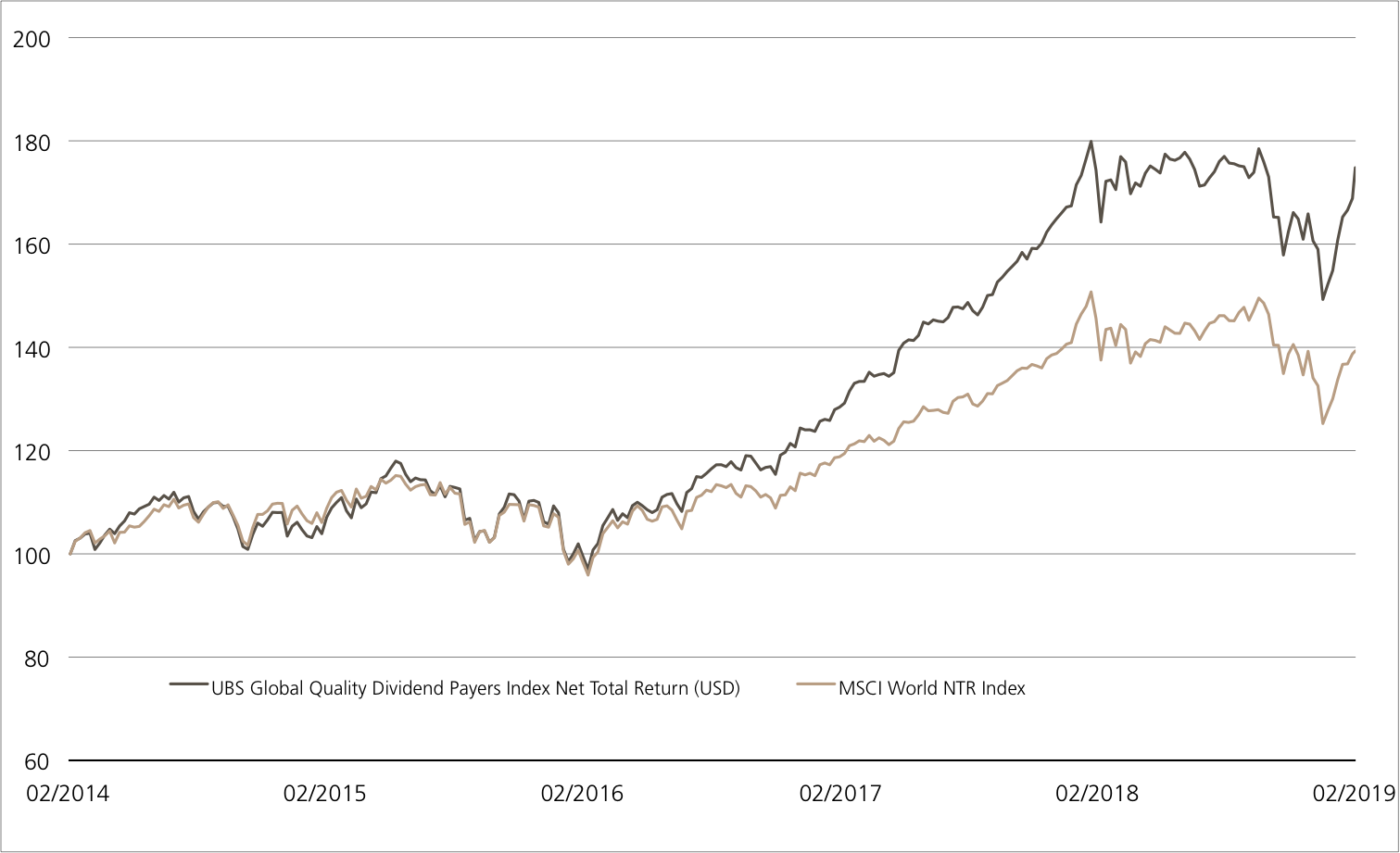
L’UBS Global Quality Dividend Payers Index a également enregistré des rendements plus élevés que le marché des actions dans son ensemble. Depuis 2016, l’indice se distance à vue d’œil du MSCI™ World Index. ¹) Nous attirons votre attention sur le fait que la performance passée n’est pas un indicateur de l’évolution de valeur future.
Source: UBS AG, Bloomberg
Valeurs du: 06.02.2019
¹) La performance passée n’indique pas les résultats futures.
²) Les condition des ETTs sont vérifiés annuellement et peuvent être ajustées avec un délai de 13 mois après la publication.
Open End PERLES sur Dow Jones Switzerland Select Dividend 15 Index™
| Symbol | SWDIV |
| SVSP Name | Tracker Certifikat |
| SVSP Code | 1300 |
| Sous-jacent | Dow Jones Switzerland Select Dividend 15 Total Return Index™ |
| Devise | CHF |
| Rapport de souscription | 10:1 |
| Frais de gestion | 0.40% p.a. |
| Participation | 100% |
| Echéance | Open End |
| Émetteur | UBS AG, London |
| Bid/Ask | CHF 207.80 / 209.10 |
Open End PERLES sur UBS Global Quality Dividend Payers Net Total Return Index
| Symbol | DIVQC |
| Symbol | DIVQD |
| Symbol | DIVQE |
| SVSP Name | Tracker Certifikat |
| SPVSP Code | 1300 |
| Rapport de souscription | 1:1 |
| Frais de gestion | 1.00% p.a. |
| Participation | 100% |
| Echéance | Open End |
| Émetteur | UBS AG, London |
| Bid/Ask | CHF 266.01 / 268.70 USD 314.22 /317.39 EUR 377.75 / 380.50 |
Vous trouverez davantage de produits UBS et des informations sur les opportunités et les risques à l’adresse ubs.com/keyinvest.
Source: UBS AG, Bloomberg
Valeurs du: 06.02.2019
Apérçu du marché
| Index | Citation | Semaine¹ |
| SMI™ | 9’143.00 Pt. | 2.0% |
| SLI™ | 1’415.70 Pt. | 1.5% |
| S&P 500™ | 2’731.61 Pt. | 1.9% |
| Euro STOXX 50™ | 3’212.75 Pt. | 1.6% |
| S&P™ BRIC 40 | 4’177.63 Pt. | 1.1% |
| CMCI™ Compos. | 913.51 Pt. | 0.8% |
| Gold (troy ounce) | 1’314.40 USD | -0.1% |
¹ Changement basé sur le cours de clôture du jour précédent par rapport au cours de clôture de la semaine dernière.
SMI™ vs. VSMI™ 1 année
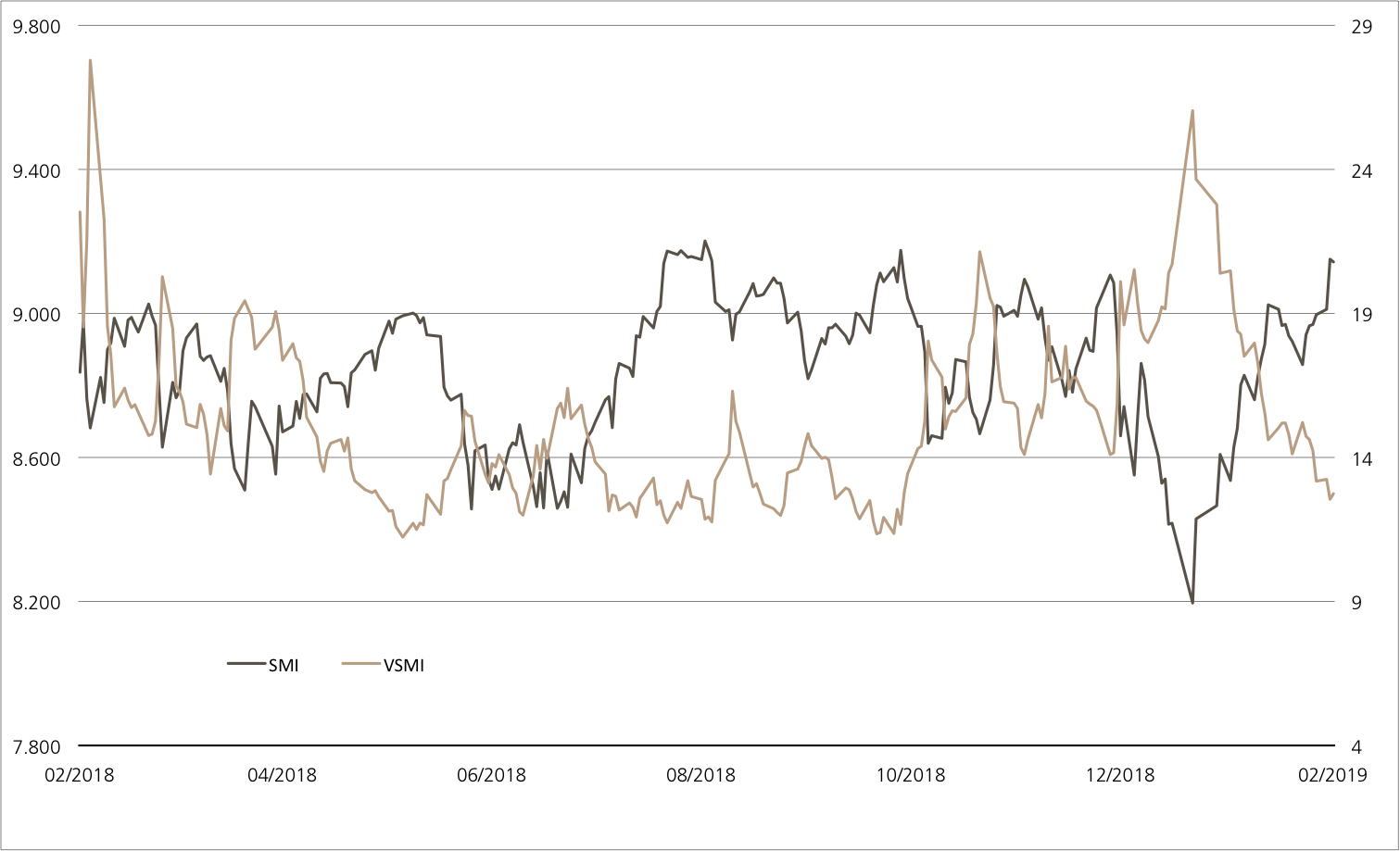
L’index VSMI™ est calculé depuis 2005. Il affiche la volatilité des actions inclus dans le SMI™ index. Pour la calculation, un portefeuille est utilisé qui ne réagit qu’au variations de la volatilité au lieu des variations des prix. En le faisant, la méthodologie du VSMI™ utilise la volatilité carré, connu sous le terme variance, des options sur le SMI avec 30 jours jusqu’à l’échéance négociées à la Bourse Eurex.
Source: UBS AG, Bloomberg
Valeurs du: 06.02.2019
Tesla
Les chaînes de production génèrent des bénéfices
Pendant très longtemps, les chiffres des bilans de Tesla, le pionnier américain des voitures électriques, sont ressortis dans le rouge. Mais le second semestre 2018 a marqué un tournant puisque le groupe californien a publié des bénéfices pendant deux trimestres consécutifs. Cette tendance positive devrait se poursuivre. Le fondateur de la société, Elon Musk, a annoncé qu’en 2019, la société réaliserait des bénéfices tous les trimestres, notamment grâce au modèle 3 très porteur, qui sera probablement disponible en Europe à partir de février. Seule ombre au tableau, l’objectif de production de plus de 500 000 unités par an prévu initialement pour 2018 ne pourra vraisemblablement être atteint qu’entre le quatrième trimestre 2019 et le deuxième trimestre 2020. (Source : Thomson Reuters, article de presse, 30.01.2019) Le Kick-In GOAL (symbole : KCWSDU) sur Tesla permet de réaliser des bénéfices importants même si le parcours est semé d’embûches. Le produit offre une opportunité de rendement de 19,1% avec une marge de sécurité de 42%.
Malgré ces premiers bénéfices, la société continue d’évoluer en dents de scie, aussi bien dans ses activités opérationnelles qu’au niveau de la bourse. L’action du constructeur automobile américain fait le yoyo entre 280 et 380 dollars américains depuis des mois. Bien que Tesla ait tenu sa promesse de publier un bilan positif en termes de fondamentaux, son CEO charismatique, Elon Musk, est encore très loin de l’objectif fixé. Il se heurte, entre autres, aux difficultés que provoque le conflit entre la Chine et les États-Unis. Afin de compenser la hausse des taxes douanières, Tesla baisse maintenant le prix du modèle 3. Pour contourner ce genre de problème à l’avenir, Tesla veut fabriquer directement en Chine. La production doit commencer au second semestre de cette année dans l’usine de Shanghai avec un objectif de 3000 véhicules de type 3 par semaine. (Source : Thomson Reuters, article de presse, 01.02.2019) Le groupe américain met également en place des mesures pour réduire les coûts. « Nous devons impitoyablement réduire les coûts pour fabriquer des voitures abordables et ne pas faire faillite», a déclaré le patron de Tesla lors d’une conférence d’analystes le 31 janvier.
Opportunités: Malgré ces premiers succès, Tesla doit encore surmonter quelques difficultés. Il pourrait donc être judicieux d’investir dans l’action du constructeur automobile non pas directement, mais avec une protection partielle sous condition. Le Kick-In GOAL offre une opportunité de gain considérable avec une marge de sécurité correcte (symbole : KCWSDU). Le titre émis en décembre 2018 est doté d’un coupon de 15,00% p.a. Étant donné que le Kick-In GOAL cote au-dessous du pair, le rendement s’établit même à 22,8% p.a. actuellement. La barrière se situe à 181,53 dollars américains, elle est donc éloignée du cours actuel par une marge de 42%.
Risques: les Kick-In GOALs ne bénéficient d’aucune protection du capital. Si pendant la durée de l’investissement Tesla atteint ou franchit une seule fois le Kick-In Level, la cote du sous-jacent doit remonter au moins au niveau du Strike Level à l’échéance. Dans le cas contraire, le remboursement s’effectuera en espèces conformément au ratio de souscription. Dans un tel cas, des pertes sont probables. Par ailleurs, avec les produits structurés, l’investisseur supporte le risque d’émetteur. Cela signifie qu’en cas d’insolvabilité d’UBS SA, le capital investi peut être perdu, indépendamment de l’évolution du sous-jacent.
Vous trouverez davantage de produits UBS et des informations sur les opportunités et les risques à l’adresse ubs.com/keyinvest.
Tesla

Source: UBS AG, Bloomberg
Valeurs du: 06.02.2019
15.00% p.a. Kick-In GOAL sur Tesla
| Symbol | KCWSDU |
| SVSP Name | Barrier Reverse Convertible |
| SPVSP Code | 1230 |
| Sous-jacent | Tesla |
| Devise | USD |
| Coupon | 15.00% p.a. |
| Rendement latéraux | 19.83% (23.82% p.a.) |
| Kick-In Level (Distance) |
USD 181.53 (43.06%) |
| Echéance | 05.12.2019 |
| Émetteur | UBS AG, London |
| Bid/Ask | 92.72% / 93.72% |
Vous trouverez davantage de produits UBS et des informations sur les opportunités et les risques à l’adresse ubs.com/keyinvest.
Source: UBS AG, Bloomberg
Valeurs du: 06.02.2019
¹) La performance passée n’indique pas les résultats futures.
²) Les condition des ETTs sont vérifiés annuellement et peuvent être ajustées avec un délai de 13 mois après la publication.

